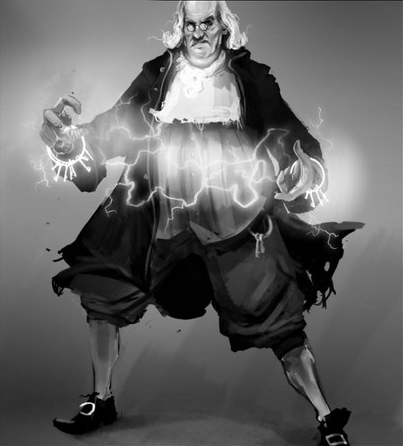Though it took some patience and some skilled hands, everyone has finished their kites! The back of each kite includes an executive summary of the famous event, including the WHO, WHAT, WHEN, WHERE, WHY and HOW of it all. Many have keys attached, and one student even brought in a mock
Leyden jar just like the one Ben used to "trap" his electricity.
After the "enlightening" experience of the kite projects, we did go back into Ben's childhood and do a more traditional biography study.
We've studied his life so far right up to about his 40s, when he really made his mark as a printer of two major publications: 1) The Philadelphia Gazette newspaper and 2)
Poor Richard's Almanac. Both had a major impact on the thinking and development of society in Ben's times and the sayings and wisdom of "Poor Richard" are still well-known today. We spent some time unpacking and decoding several of Poor Richard's gems, such as:
- Early to bed and early to rise, makes a man healthy wealthy and wise.
- He that can have Patience, can have what he will.
- Diligence is the Mother of Good-Luck.
- Hear no ill of a Friend, nor speak any of an Enemy.
- A true Friend is the best Possession.
For the last few weeks we've been trying our own hand at publishing, working on a newspaper project in the computer lab. Each student is putting together a newspaper edition inspired by Ben Franklin with the following requirements:
- One funny article about life at your school written with
a pseudonym (Like Silence Dogood!)
- One article with advice for other students
- A newspaper cartoon (you can copy from the internet but
make sure you say where you got it)
- Three jokes and/or riddles throughout the paper
- An Almanac Page with:
- Weather predictions
- Wise sayings
We've also taken some time the last couple weeks to introduce/review some specialized deductive reasoning skills with logic grids. Some kids love them, some kids dread them. Either way, logical reasoning is an important piece of their thinking tool kit!





























































